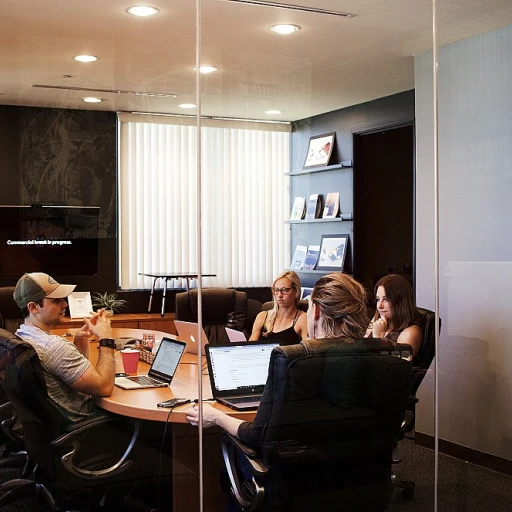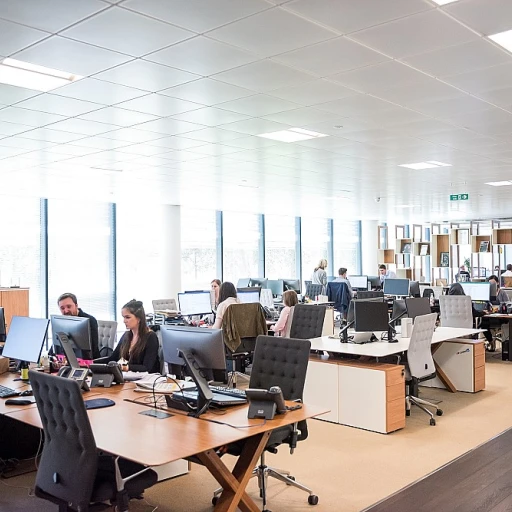
Understanding the Importance of a Green Workspace
The Ripple Effect of a Green Workspace
Recognizing the importance of fostering a green workspace is crucial in today's business climate. A sustainable office environment not only reduces carbon emissions but also benefits the company's bottom line in the long run. In an era where the environmental impact of daily operations cannot be ignored, a shift towards eco-friendly practices becomes both an ethical responsibility and a pragmatic business decision.
Offices that prioritize sustainability gain a competitive edge by aligning with global standards of sustainable business practices, resulting in a positive brand image. With growing awareness and concern over environmental issues, businesses are under increasing pressure to adapt and demonstrate environmental stewardship through tangible actions, such as waste reduction initiatives and conscious energy consumption.
Moreover, the transition to a sustainable office is not just about infrastructural changes; it's also about transforming company culture. Engaging employees in sustainability goals creates a sense of shared purpose, enhancing well-being and productivity. Employees tend to respond positively when they feel their work environment is aligned with broader environmental goals, fostering a deeper connection to their roles and boosting overall morale.
As Indian companies explore sustainable solutions, they must focus on integrating renewable energy sources, utilizing natural light, and choosing sustainable materials for furniture and office design. This transition will also involve reevaluating resource usage, such as minimizing plastic waste and conserving water through practical measures.
Assessing Your Current Office Environment
Evaluating Your Office Environment's Eco-Friendliness
Taking the first step towards a sustainable office setup involves a thorough assessment of your current office environment. This process helps identify the key areas that need improvement to reduce your carbon footprint and embrace a more eco-friendly approach.
Start by analyzing your energy consumption. Do an energy audit to determine where most of the energy in your office is being used and identify ways to make it more energy efficient. Check if natural light is being maximized, as this can significantly reduce the need for artificial lighting.
Consider the materials and furniture currently in use. Are they made from sustainable materials? If not, planning for a transition towards sustainable office solutions can vastly improve your environmental impact.
Review your waste management practices. Analyze how much waste is being generated, especially plastic waste and paper towels. Implementing a good waste reduction strategy can help lessen the environmental impact.
Moreover, understand your water usage. Is there a way to make it more efficient or to treat greywater for non-potable uses? Efficient water management is a crucial aspect of sustainability goals.
Such an assessment may also involve looking at company policies and how they align with your sustainability goals. When your office's environmental impact is clear, crafting effective changes becomes easier. To learn more about how your current practices might be impacting the environment, you can check out this helpful resource.
Implementing Energy-Efficient Solutions
Implement Practical Energy-Saving Techniques
In today's world, crafting a sustainable work environment requires making informed decisions about energy conservation. To begin, evaluate your office design and identify opportunities to reduce energy consumption. Consider the following steps:
- Utilize Natural Light: Design your office space to maximize the use of natural light. This not only saves electricity but also improves employee well-being by creating a vibrant and welcoming atmosphere.
- Install Energy-Efficient Lighting: Replace traditional bulbs with LED or CFL options. These consume less energy and have a longer lifespan, reducing both energy consumption and waste.
- Optimize Heating and Cooling Systems: Adopt energy-efficient HVAC systems, and make sure they are regularly serviced to operate at peak efficiency. Control temperature settings to prevent unnecessary energy usage.
- Implement Energy-Saving Office Equipment: Invest in computers, printers, and other office devices with energy-efficient ratings. Encourage employees to switch off equipment when not in use.
Transitioning to an energy-efficient office can be a vital step in achieving your organization’s sustainability goals. Embrace these changes and witness a significant reduction in your office’s carbon footprint and overall environmental impact.
Shifting towards an energy-efficient office not only supports global efforts in reducing carbon emissions but also boosts the morale of employees who are increasingly aware of environmental issues. By embracing these energy-saving strategies, businesses can foster a positive company culture while demonstrating their commitment to sustainability.
Incorporating Sustainable Materials and Practices
Choosing Sustainable Materials for Your Office
Incorporating sustainable materials into your office design is an integral step in fostering an eco-friendly office environment. By doing so, businesses not only contribute to reducing carbon emissions but also align themselves with broader sustainability goals. First, consider the furniture. Opt for desks, chairs, and cabinets made from recycled or reclaimed wood. Not only does this choice reduce waste, but it also makes a substantial impact on the company's carbon footprint. Additionally, look for furniture that is modular and easy to repair, extending its life and reducing the need for replacements.Reducing Plastic and Paper Waste
Another aspect to examine is the reduction of plastic waste in your office environment. Implementing policies that minimize the use of single-use plastics, such as plastic bottles and utensils, can significantly reduce your office's environmental impact. Encourage employees to use reusable bottles and cutlery. In the same vein, rethink your office’s paper usage. While completely eliminating paper may not be feasible, reduce reliance on printed documents by adopting digital file management systems. When paper use is necessary, select recycled paper products, and consider eliminating paper towels in favor of cloth alternatives.Enhancing Natural Light and Energy Efficiency
Natural light not only conserves energy but also positively influences employee well-being. Design your office space to maximize the use of natural light, reducing the need for artificial lighting and subsequently lowering energy consumption. Install energy-efficient LED lighting in areas that require additional light. Smart light systems with sensors can also help manage electricity usage by dimming or turning off lights when not needed. Furthermore, consider upgrading to energy-efficient appliances and office equipment. These solutions not only reduce energy consumption but also decrease operational costs in the long run. For instance, energy-efficient computers and printers consume less power and generate fewer emissions.Promoting a Green Office Culture
Creating a sustainable office involves the collective efforts of all employees. Inspire your team to share ideas for further eco-friendly practices and to participate actively in sustainability initiatives. This involvement helps reinforce a positive company culture around sustainability and encourages innovative ideas for further reducing your office’s carbon footprint. A collaborative approach ensures that everyone is on board, translating into more effective implementation of green practices across the board. By integrating these sustainable materials and practices, companies can significantly reduce their environmental impact while promoting a healthier work environment for their employees.Engaging Employees in Sustainability Initiatives
Fostering a Culture of Sustainability
Engaging employees in sustainability initiatives is crucial for creating a truly eco-friendly office environment. A green office is not just about the physical space but also about cultivating a company culture that prioritizes sustainability. Here are some effective strategies to involve your team:
- Education and Awareness: Conduct workshops and training sessions to educate employees about the importance of sustainability. Highlight the impact of energy consumption, carbon emissions, and waste reduction on the environment.
- Encourage Participation: Create opportunities for employees to participate in sustainability projects. This could include forming a green team to spearhead initiatives or organizing challenges to reduce plastic waste and energy use.
- Incentivize Eco-Friendly Practices: Offer incentives for employees who actively contribute to sustainability goals. This could be in the form of recognition, rewards, or even small bonuses for innovative ideas that reduce the office's carbon footprint.
- Promote Sustainable Commuting: Encourage carpooling, cycling, or the use of public transport. Providing facilities like bike racks or shuttle services can make these options more appealing.
- Feedback and Improvement: Regularly seek feedback from employees on sustainability practices and be open to suggestions for improvement. This not only engages them but also helps in refining the strategies to better suit the office environment.
By actively involving employees in sustainability initiatives, businesses can significantly reduce their environmental impact while fostering a sense of community and shared responsibility. This approach not only benefits the planet but also enhances employee well-being and satisfaction, creating a more harmonious work environment.







